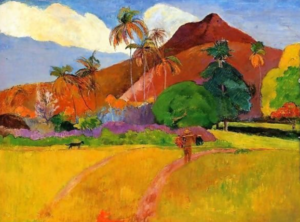Paul Gauguin was a prolific French painter and the key figure of the Symbolist movement. The Gauguin artist had an essence of the subject and was intrigued by various growing artistic forms like Primitivism. He left one stone unturned, from ceramics to oil paintings, to inspire many creative hearts.
Gauguin artists used experimental colors to paint landscapes and beautiful ideas that set a benchmark in art caliber and formation. His influential artworks magnetized other French artists to learn from him, which remained appreciated until after his death.
Tap into this lucrative segment that illustrates some profound insights into the life of Paul Gauguin. Learn about the artist Gauguin, his artistic styles and techniques, and how he influenced other painters with his artistic caliber.
Artistic Influence
Undoubtedly, the kind of dedication, hard work, and extra efforts that Gauguin put into his artworks was beyond ordinary. He was always experimenting with something, whether a different exclusive artistic style or an unusual color palette.
Not just artists but Gauguin’s life inspired the novel The Moon and Sixpence by W. Somerset Maugham. Other than that, he motivated a flare of artistic talents in the 20th century; all of them were par excellent creative talents than the other.
The prominent names that could justify the statement include Vincent Van Gogh, Georges Braque, Andre Drain, Henri Matisse, Picasso, etc. The list of his influential work reaches Arthur Frank Mathews and the American Arts and Craft movement.
Gauguin and Picasso
Both Gauguin and Picasso got very little time working with each other as Gauguin died in 1903. However short their journey together was, it was worth every penny for the impactful artists. Its impact is seen in a painting that Picasso handcrafted after hearing about the death of Gauguin.
It is a standing nude from 1903 which shows a Tahitian woman walking and is signed as “PAUL Picasso.” Both the artists were very different in a variety of aspects. But one thing that binds them both in one direction is their love of pure and valued art. The influence of Gauguin artist surrounded Picasso.
Picasso was so much into woodcuts, ceramics, and oil on canvas, wholly coming from the visions of the Gauguin artist. Even the ideas of Primitivism entered Picasso through Gauguin’s subject interests. Diving deep into traditional conventions of art, Picasso took admirers from Gauguin’s travels to artworks.
His aviate-grade ideas to depict the primitive nature of humans, going beyond the norms, and extending his desires beyond anything that can be imagined were just a glimpse of his inspiration from Gauguin. Believe it or not, without imagining an early connection between Pablo and Gauguin, it would be impossible to imagine what an artist Picasso would have been otherwise.

Gauguin’s Influence on Picasso
The retrospective exhibitions held at Salon d Automne in Paris in 1903 had quite an impact on the paintings of Picasso. However, in 2907, Picasso tried his hands on the oversized paintings of nude women. A work recalled by Gauguin showed his interest in primitive art.
Many of Picasso’s massive paintings reflected Gauguin’s writing, sculptures, and paintings. Gauguin biographer David Sweetman states that Picasso became a fan of artist Gauguin when he met Spanish sculptor Paco Durrio.
He was a friend of Gauguin and had a handful of artworks with him. Durio was there to help his poverty-stricken friend in Tahiti through his oeuvre in Paris. After they met, Durio took Picasso to show him Gauguin’s stoneware.
Gauguin’s creativity fully captured Picasso and, with Durrio’s help, made some beautiful ceramic pieces. Picasso gave his first La Plume edition of Noa-Noa: The Tahiti Journal of Paul Gauguin. Picasso even worked at the Ambroise Vollard, where he and Gauguin were represented under the same roof.
Artistic Style and Techniques
Gauguin started working under the guidance of Pissarro, but the relationship was more personal than professional. The poet Stephane Mallarme and philosopher Arthur Schopenhauer often influenced his work ideologies and styles.
Like his other colleagues, he imagined a technique of painting canvas termed Peinture à l’essence. This technique included the oil binder being drained from the paint and the leftover pigment mixed with turpentine. It was not just paintings but the remarkable woodcuts by artists that spell only beauty.
They were very innovative in their making. He chiseled the woodblocks to draw attention to detail and then transformed them into a blend of color splash. Every detail was noticed precisely, and this technique went parallel to his flat and decorative relief on the canvas.
Gauging was a fan of the mute effect representing an analogy with colors. After that was the introduction of non-representational colors, which let them withstand their individuality and dominance. An eminent sense of raw emotionality was associated with colors in his portraiture, which connected the spectator’s heart to the painting narrative.
The Bottom Line
French painter Paul Gauguin was an artistic talent beyond par excellence. It was not canvasing that intrigued me, but a sense of creativity coming from sculpture, ceramics, and different genres of expressive art. He influenced many artists, among which Picasso is the first one that comes to our mind. You can look for Paul Gauguin’s artworks online to learn about Gauguin as an artist and check Paul Gauguin’s famous drawings.
click here for more articles.
Disclaimer: For more interesting articles visit Business Times.

